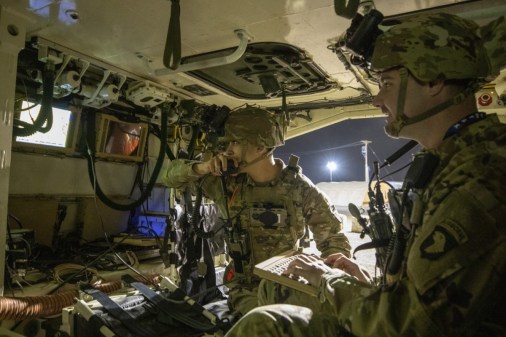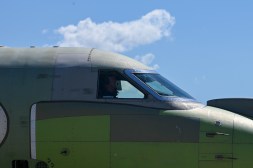Air Combat Command chief warns China’s military arsenal entering ‘wicked, dangerous territory’

Gen. Mark Kelly shared sharp warnings with reporters this week about the seriousness of growing technological and security threats associated with China that he’s witnessing escalate from his perch as the Air Force’s Air Combat Command chief.
“To make sure there’s no ambiguity: the architecture they are building today to defend their interests is frankly designed to inflict more casualties in the first 30 hours [of a future war] than we’ve seen in the last 30 years in the Middle East,” Kelly said during a media roundtable at the annual AFA Air, Space and Cyber conference.
He did not provide an exact number for those “first 30 hours” of casualties. However, research from Brown University’s Watson Institute in 2019 suggests more than 7,000 U.S. service members were killed during the post-9/11 wars.
Kelly oversees the management and operation of ACC — the U.S. military’s primary force provider of combat airpower, with more than 1,000 aircraft — and has accrued more than 6,000 flying hours as a pilot, including more than 800 combat hours in fighter aircraft.
At last year’s AFA conference, Kelly detailed why and how the command’s long-term planning priority is to ensure the U.S. military reaches next-generation air dominance before China and other U.S. rivals.
This year, he shed light on the approach and capabilities the Chinese government and military are pursuing to enhance their firepower.
“As an airman, let’s just say you don’t look at anything that’s really Air Force-related in terms of airplanes. Just look at their surface fleets — their destroyers, [Liaoning aircraft carriers], [Renhai-class cruisers], their surface-to-air missile systems they have on those tier-one, surface action group assets is wicked, wicked, dangerous territory. It’s significantly more dangerous than anything that’s fielded in and around Ukraine,” Kelly told DefenseScoop at the media roundtable on Tuesday.
He added: “If you then look at the fact that they have the same systems up and down the coast, if you look at what they can do in terms of jamming across the electromagnetic spectrum, if you look at their inventory of radar missiles — the list goes on.”
While the U.S. military spent the first two decades of this century primarily focused on a counterinsurgency campaign in the Middle East, Kelly said China has deliberately worked particularly in the last two years to organize, train, equip and field air, space and cyber forces strategically to fight the West.
“And they have done so, and put those chess pieces on the board where they need them. And there is no ambiguity that they’re designed to inflict serious damage on installations, aircraft and airmen and naval assets that are in and around those installations,” he told DefenseScoop.
Kelly also confirmed that he sees how Chinese and Russian military pilots and forces are looking to capitalize on the old age of certain U.S. aircraft and platforms as a weakness in the near term.
After speaking onstage earlier at the conference, he said he was approached by several officials representing U.S. allies and partners.
“They look to us for that beacon of competence and confidence of a military that is hitting on all cylinders, and I would say the current dynamic we’re in right now does not instill” confidence, Kelly told reporters. “Some of them are interested and vexed, some of them are downright concerned. And we try to make sure we allay those concerns as much as possible — but it’s getting more challenging by the day.”






